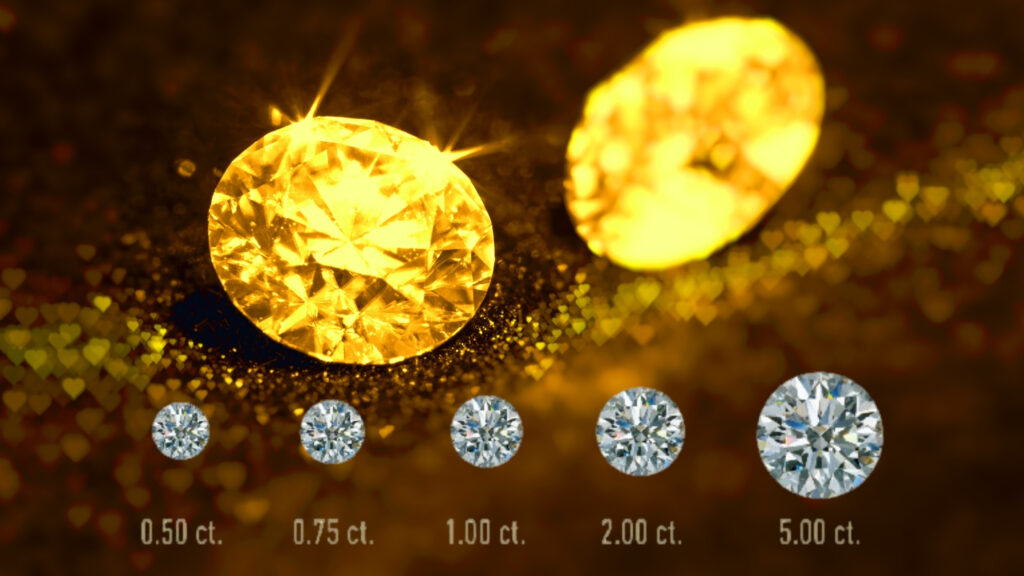The tyrant of Syracuse, Hieron II appointed Archimedes to test the gold purity of his crown. Hieron II suspected that the gold crown manufactured by the goldsmith was not pure gold. Archimedes’ famous discovery of the water volume displacement of pure gold vs. the fake crown brought him immortality status. Grasping how to buy gold and silver today requires us to understand gold purity.
The practice of guaranteeing gold purity by Kings and merchants from the ancient times of Pharaoh Menes who stamped his imperial seal on gold nuggets 5000 years ago until today is as important as the gold itself.
A comprehension of gold purity and its measurements is a valuable basic skill for any gold investor or collector.
Alloying gold
Pure gold has a sparkle and fineness that dissipates when an alloy is added. According to Ametek – Alloying is a process in which two or more metal elements are melted together in a precise combination to form a specific material or alloy.
There is a purpose with adding other metals to gold other than degrading or increasing the object’s weight with cheaper substances.
When gold is mixed with other metals like copper or silver it increases the durability and makes the gold harder which is better suited for everyday wear as jewelry.
Gold coins are stronger and less prone to scratches and chips when alloyed. A popular alloy gold coin is the American Gold Eagle that contains a mixture of gold (91.7%), copper (5.3%) and silver (3%).
The process of alloying appears simple but it must take place under strict conditions and control to prevent other impurities from entering the two or more metals.
Different metals added to gold create different colours which provide variety in the colour spectrum of gold products and visible appeal which is suited for different markets.
Gold color varieties

One of the best examples of the color variety in the gold bullion market is the most produced gold coin: the famous Krugerrand that contains 8.33% copper that gives the coin a pink-orange color undertone.
The jewelry industry probably uses gold alloy the most through their creation of various different gold colored artifacts. To create a different colour gold starts with pure gold which is then blended with other metals. Goldsmiths have specialised processes and blending recipes which are closely guarded trade secrets.
Gold is mostly alloyed with silver, copper, zinc, palladium and nickel to create different colors. These colored gold are cheaper and not pure anymore. The most common gold colors are yellow, white, rose (red), and green.
Yellow Gold

Pure gold appears as sparkling yellow and still the most sought-after gold color. To strengthen gold for jewelry and other purposes, shades of yellow gold can be created. By blending different mixtures of pure gold, silver, copper and sometimes zink different yellow palettes are being generated.
White Gold

In its “purest” form White Gold is created by alloying gold with palladium or platinum. The palladium or platinum is replaced by different combinations of silver, copper, zinc and nickel in order to create lower-cost substitutes.
Rose Gold

A very popular color in recent years is Rose Gold (also called Red Gold) which consists of gold alloyed with copper. The end result of making Rose Gold is a gold product with a reddish (pink) undertone. Different shades of pink are being achieved by adding silver as well.
Green Gold

Green gold is also called Electrum. The first coins in human history were made from electrum dating back to 600 BC. Ancient coins were produced by Electrum. Electrum was used as an exterior coating to top parts of pyramids and obelisks as wells as for making drinking vessels.
Electrum is the natural occurrence of gold and silver with small amounts of copper, platinum, or other metals. Electrum is found naturally in places such as Western Anatolia but is also alloyed by man to create Green Gold. In its natural form, Electrum found in ancient Lydia contained 45%-55% gold. Modern Electrum from Western Anatolia contains between 70% to 90% gold.
Electrum appears yellow with a green tint. The green color of gold can be enhanced by adding 2% to 4% cadmium to produce stronger green appearing gold.
Other gold colors
Lesser-known gold colors are Black Gold. Grey Gold is formed as an alloy of gold and iron. Silver is sometimes added as well.
There are various ways of alloying blue gold. One of the methods is to alloy gold with 25% arsenic or iron. Even Purple Gold which is alloyed by blending gold and an aluminum-rich solution can be fabricated.
Gold Karat or Carat
Carat weight originated from the Greek measure based on the uniform carob seed. 1 Carat equals 0.2 gram.
According to Regnas custom jewelry Roman soldiers were paid in coins called Solidi. A gold solidus was 1/72 of the Roman pound and consisted of 24 carats gold (based on carob seed). A solidus was also equal to 24 silver Siliqua coins. The word carat became associated with the number 24.
In German the word carat is translated as “karat”. In 1873 Germany created the Mark coin which weighed 24 carats (karat) or 4.8 grams. The unit 24 Karat became popular to express the amount of gold in relation to other metals that were added to gold. Hence Karat arose as a measure of gold purity in relation to other metals expressed in parts of 24.
The purer the gold, the higher the karat with 24K (Karat) of gold as the purest (24/24). Therefore 18 Karat gold consisted of 18 parts out of 24 gold and 6 parts out of 24 from other metals.
In modern times carat is used to measure the weight of diamonds. A diamond’s weight is measured in carat subdivisions of 100 points. Jewelers refer to diamonds below 1 carat as pointers and above 1 carat in decimals. For example, a diamond weighs twenty-five point or 1.25 carats for larger diamonds.

Both the words “karat” and “carat” originated from the Greek carob seed. Karat developed as a measure of gold purity while carat is a measure of the weight or mass.
Fineness of gold
When karats are expressed in parts of a thousand, 24 karat pure gold ranges from 95.8% (958) pure to 100% (1000). In modern times there is an increased demand for the purest refined gold. Gold bullion is produced and refined in 99.9 pure or even 9999 pure. Examples are:
- Canadian Maple Leaf Gold Coin
- Austrian Philharmonic Gold Coin
- American Gold Buffalo Coin
- Australian Gold Nugget
- Chinese Gold Panda.
There is a big difference between a 95.8% pure gold coin and a 99.99% pure gold coin. Yet both are 24 Karats. This led to the use of thousands as a gold fineness measurement system instead of karats.
Karats as a gold purity indicator is still popular in the gold jewelry industry due to jewelers’ necessity to alloy gold. Pure gold is very difficult to work with and very soft which is not ideal for jewelry manufacturing.
Therefore expressing gold purity in karats is fine for the jewelry industry which hardly ever uses 9999 pure gold to create jewelry fashion items.

Gold Fineness vs Gold Karat
The fineness of gold in decimals of a thousand has risen in popularity due to:
- Improved technologies enabling us to produce extremely pure gold (fine gold);
- The rise of the gold bullion industry;
- The use of decimals used in global currencies;
- The adoption of the metric system, especially in Europe.
The table highlights the most used karat purity and gold fineness as examples of the various gold compositions.
| Karats & Use | Purity % | Fineness | Alloyed | Gold Color |
|---|---|---|---|---|
| 24K (Coins & bullion) | 95.8% – 99.9% | 999 | 95.8% Pure gold and above | Sparkling Yellow Gold |
| 22K (Expensive jewelry) | 91.6% | 916 | Gold: 91.6% Silver, Copper, or Zink | Rose, White & Yellow Gold |
| 20K (Asia) | 83.3% | 833 | Gold 83.3% Silver, Copper, or Zink | Rose, White & Yellow Gold |
| 18K (Used with studded jewelry) | 75% | 750 | Gold: 75% Silver: 15% Copper: 10% | Rose, White & Yellow Gold |
| 14K (Most popular jewelry gold) | 58.3% | 583 | Gold: 58.3% Silver, Copper or Palladium | Rose, White, Yellow & Green Gold |
| 12K | 50% | 500 | Gold: 50% Other metals: 50% | Rose, White, Yellow & Green Gold |
| 10K (Minimum standard in the US & other countries) | 41.7% | 417 | Gold: 41.7% Other Metals: 58.3% | Rose, White & Yellow Gold |
| 9K (Minimum standard in England & Canada) | 37.5% | 375 | Gold: 37.5% Other Metals: 62.5% | Rose, White & Yellow Gold |
Final thoughts
Alloying gold is not an act of degrading gold with less pure metal. It is also an art form to strengthen gold and to increase the color spectrum of gold for use in different markets. Alloy gold may take away the purity of gold but it increases the use thereof and enhances the variety of gold.
Carat is used as a measurement of gemstones and not in gold. Although gold measurement shares the same origin with the humble carob seed, it has been developed into a measure of gold purity as karats and gold fineness in thousands.
Understanding how gold purity is expressed is important when making any gold purchase. From sealing the bond of love with a gold ring to being an investor or collector. Every person will at some stage in their life encounter aspects of gold purity. Gold purity measurements is an essential element of our knowledge of how to buy gold and silver.



Interesting article How to buy gold-Gold Purity Measurements. I like the story about Hieron II and Archimedes, I didn’t know.
I also didn’t know that there are so many different colors of gold, I knew yellow and white gold, which is my favorite, and I see in your article that it is the purest. You really collected interesting information and shared it with us in this post. I can say that I learned a lot about gold. I am one of those who is not a connoisseur, only a lover of gold.
Friendly greeting,
Nina
Fascinating history behind the determining factors of gold, and practical information too!
Thank you for your comment Aaron, we kind of love history and since history repeats itself we think there are some valuable lessons to be learned from history. We should not live in the past but if we can learn from it our future will be bright.
All the best
Louis Munro
I have been needing to find an aritlce like this one with this much thorough instructions because I have been trying to buy gold as a hedge against inflation in the recession that is inevitably coming the US because of all this money printing, I must say that you have finally given me some hope in terms of how I can buy it. thank you so much
Thank you!. I am humbled by your comment Misael and I am now more motivated than ever to help people to protect themselves from currency deflation.
Have an amazing gold and silver day!
Louis Munro
Very informative. There is so much to learn and understand before buying gold. This type of article is priceless and crucial for new buyers.
Look forward to the next article.
Hi Jenny
Thanks for your positive comment. What you say is true. We know that gold and silver have stored value for centuries and they will never lose their value. How to buy gold and silver and what to do with them after you bought them is another challenge. You can read all about HOW TO STORE GOLD AND SILVER on our blog.